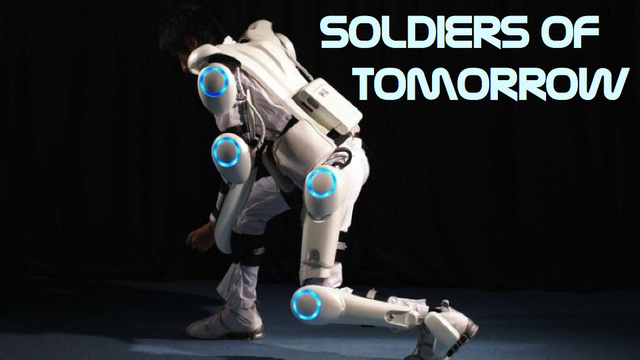Cybernetic Vision and the Rise of the Machines
The Rise of the Machines
“…based on the various reports, it is possible that they were located using surveillance technology that tracked their satellite phones.” – EFF report on foreign journalist deaths in Syria
I’d like to start this post with a stark and sad reminder. Technology is never neutral. It is always designed with a function, and that function can be creative or destructive. Who controls the function is what really matters. In memory of Marie Colvin and Rémi Ochlik (French photographer), casualties of our obsession with technology.
“It’s a complete and utter lie they’re only going after terrorists…The Syrian Army is simply shelling a city of cold, starving civilians.” – Final words of Marie Colvin

Marie Colvin, 1956-2012. A UK report who was murdered in Homs on Wednesday (2/22) while covering the murder of civilians by the Bashar al-Assad regime in Syria.
(Read more here on Colvin and here on how Syria likely found her.)
Turing Machine
Alan Turing invents the basic idea for tape computation with his simple machine around 1936. From here, there is no turning back from the world of logical computation, mathematics and technological innovation. Once the code was released, it vent viral.
⟨ Statecurrent, Symbol, Statenext, Action ⟩
A simple model of a Turin Machine (below). Interested in building your own contraption? Here is a near step-by-step set of instructions, all extremely well visually documented, for an automated card designer machine someone made for From the Wilderness.
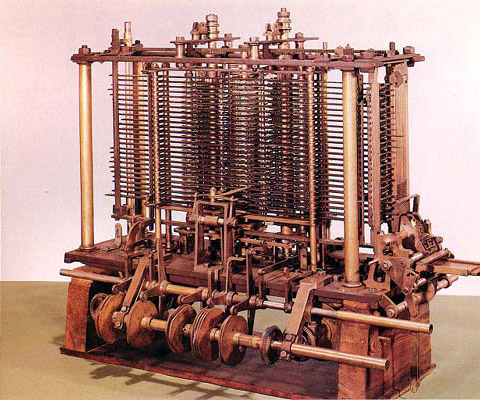
Inventing Cybernetics
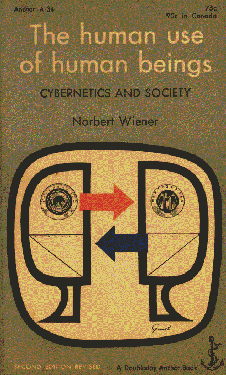
“The nervous system and the automatic machine are fundamentally alike in that they are devices, which make decisions on the basis of decisions they made in the past.” – Norbert Wiener

“A man may be a topologist or an acoustician or a coleopterist. He will be filled with the jargon of his field, and will know all its literature and all its ramifications, but, more frequently than not, he will regard the next subject as something belonging to his colleague three doors down the corridor, and will consider any interest in it on his own part as an unwarrantable breach of privacy.” — Norbert Wiener – Cybernetics (1948)
Cybernetics in popular culture
The Matrix

—
Ghost in the Shell (攻殻機動隊 – Kōkaku Kidōtai)
Imagine a future world of augmented humans and full cyborgs, linked into a vast web of information, and you’ve got Ghost in the Shell, perhaps one of the most well known of the cyber-anime manga and anime of all times. One of the central themes of the series is the question of whether cyborgs can become sentient beings, and if so, what would be the implications for humankind? Are memories just so many bits of data stored in our central processor (cerebral cortex), sending commands (neural firing) to our various parts? It’s worth considering, because the implications are quite immense should we ever reach that day. There has been a lot of really fascinating work done on this series, which you can get a taste of here, here, here and here for starters.
—
—
Cyborgs
While once it may have been a dream of sci-fi geeks and mad scientists, cyborgs are a reality of our world today. Part animal and part machine, the cyborg is a robotic person. There are partial cyborgs, often referred to as “augmentations” or “upgrades” to the human, and then there are full 100% cyborgs. They may not yet be quite like the Cylons or Agent Smiths of our technocolor dreams, but the cyborgs are among us today. Here are just a few examples of the rise of the cyborg.
Analog Cyber-Punk, Oxymoronic or Visionary?
Who are these cyberpunks anyway? Is it true they are some earlier version of ourselves? Maybe, and maybe not. What is for sure is that these thinkers have had a continuous and, oftentimes subversive, influence on popular culture worldwide. From Blade Runner and Akira to Phillip K. Dick, William Gibson, Masamune Shirow and Mamoru Oshii, we’ve been thinking about cyborgs and cyborg politics for quite a while now.

—
Are You A Cylon-loving Human, Or A Human-loving Cylon?
From it’s original release in 1978, through it’s remakes in the eighties and now in its 2004 remake, our vision of the cyborg has changed as our relation with technology has evolved. Are we dreaming of robot humans that look just like us for a reason? Could we ever truly love a cylon? Or perhaps do we fear the loss of distinction. Could our own technology overcome us? If so, what then…
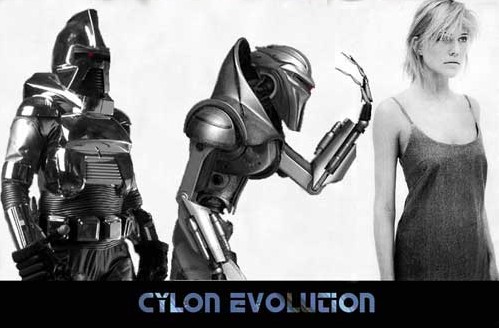
Interested in Cybernetics? Want to learn more about the underlying systems theory, complexity models and lots of other cool stuff? Then check out Principia Cybernetica, your one stop cybernetics info shop for the goods. For an interesting piece on the interconnections between cybernetics and cyborgs, check out this piece at the Girl Wonder blog. For more thoughts on robots, check out A Meditation on Robots, not mecha, ROBOTS! at Ghost Lightning. More on Animago here for all the digital artists. For some of the more interesting past robot movies and images, take a look at these short history of famous robots in the movies. Also, there are some good resources via the American Society for Cybernetics for anyone wanting to pursue these ideas more rigorously.
The iARM
Got the latest iPad and iPhone, then why not finish out the accessorizing with your very own iARM, offered in that same sleek, scratch resistance, high-density polymer frame we all know and love. iARM, Think Different.
What’s Next, Cyborg Rights?
Should being a cyborgs grant you special rights? Would being more than human, or less than fully robotic, make a difference in law and society? Some people at the IEEE International Symposium on Technology and Society were thinking about precisely these questions back in 2010, and here’s what they had to say about cyborgs. Cyborgs are people “whose physiological functioning is aided by or dependent upon a mechanical or electronic device.” Turns out, there are a lot more people like this than you might think. Hearing aid anyone?
 Yes, this was a real event poster in Santa Cruz!
Yes, this was a real event poster in Santa Cruz!
Are Mechanized Soldiers the Next Pentagon Craze?
Depends on who you ask. But one thing is for sure, the military-industrial complex within the global economy is hard at work designing and improving on the next stage of military technologies, as discussed at i09 on the rise of Cyberwarfare and the future of US military spending under Obama.
—
The Defense Advance Research Project Agency, better known as DARPA, has been l0oking for military solutions for amputee soldiers and veterans returning from combat. Here are just a few examples of what that future is starting to look like today. In particular, DARPA wants to develop prosthetics that can be directly hardwired to our nervous system, so that our brains themselves can control the prosthetics–effectively simulating precisely what our body does, only synthetically. This is all part of DARPA’s “Revolutionizing Prosthetics” program, which began in 2010 and aim to have a fully working biomechanical-neural interface by 2020. You can read all about it over at DARPA‘s project website.
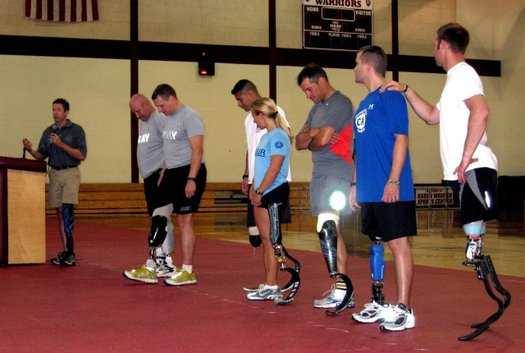
Military Amputees Brian Frasure, a clinical prosthetist and world-class athlete, speaks to the audience on the last day of the Military Amputees Advances Skills Training workshop at Walter Reed Army Medical Center. Sgt. Sara Wood/U.S. Army
—
And along those lines, here’s another look inside what Obama envisions for the future of US warfare. In particular, think about his this might relate to the original origins of our modern computers, namely people like Turning and Norbert Wiener. A statement like the one below, from the President of the US, would have never occurred even 25 years ago. But now, the “cyber” lingo has percolated to the highest echelons of power.
Sustaining U.S. Global Leadership: Priorities for 21st Century Defense (Jan. 2012)
“As we end today’s wars and reshape our Armed Forces, we will ensure that our
military is agile, flexible, and ready for the full range of contingencies. In particular, we will
continue to invest in the capabilities critical to future success, including intelligence,
surveillance, and reconnaissance; counterterrorism; countering weapons of mass destruction;
operating in anti-access environments; and prevailing in all domains, including cyber.”
Digital Dreams
It’s enough enough to make a digital world through computer technology, we even want to live in a fully immersed digital world. And nowhere is this trend more visible than in our movies and television.
Animating Our World
3D movies used to be all the rage. That’s so 2011. Welcome to Cinema 4D, where animation and computer modelling goes to a whole new level! Check out what the German design firm Maxon is doing in this little demo reel below, featuring some of the latest in hybrid 3-D computer technology.
Design and Digital Technology
Meet the Sedna Touch and Image, a new Mac-based multi-touch digital workspace designed for teamwork and collaboration with a wide range of digital media. Imaging if instead of working at a desk with a mouse and keyboard, you were using huge digital drafting tables and flat screen displays, all interactive. It’s like the X-Box Kinect crossed with a digital design studio. Or at leas that’s the claim. Could you imagine using this for your work? It makes for some more creative office and studio interactions, if you an afford the huge price tag.
Sedna at Work
This little video gives you a sense of the potential uses and possibilities for this new kind of interactive technology. Precisely how this technology will develop remains to be seen, but it presents a fascinating future.
A Look At Our Cyborg Future
It’s hard to know for sure what the future has in story for us. But based on what we already have and know, we can at least guess at some of the possible directions. This video gives us just a few such glimpses.
The Cyborg Revolution
You can watch the entire 9-part documentary series here.
Until next time…”Quiet please. I am analyzing.”
###


